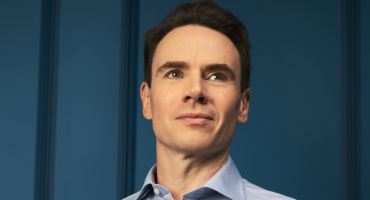Skip to main content
- Funds
- Capabilities
- Insights
- About Us
Asset classes
The views expressed are those of the authors at the time of writing. Other teams may hold different views and make different investment decisions. The value of your investment may become worth more or less than at the time of original investment. While any third-party data used is considered reliable, its accuracy is not guaranteed.
Like many countries, Japan is facing advancing risks of climate change. Our research with Woodwell Climate Research Center indicates that the country will experience more periods of extreme heat and greater probability of flooding from heavy rainfall events, coastal storms, and sea-level rise. As climate change increases the risk of devastating consequences, companies developing solutions to help prepare and protect society should see expanding markets and growing demand.
Woodwell projects the risk of dangerous heat will double in southern Japan by 2050, while northern regions may experience at least 20 days of extreme heat per year (Figure 1). Japan’s aging population is vulnerable to heat-related illnesses such as exhaustion and stroke. Heat can also lead to higher hospitalization rates, workforce health risks, and lower productivity.
FIGURE 1

Japan faces a triple threat of flooding: deluge following heavy rainfall, storm surge from typhoons, and inundation from rising sea levels. The probability of extreme rainfall events in Japan is increasing.
According to Woodwell, a historical 100-year precipitation event will be twice as likely by 2035 and four time as likely by 2065 for most of Japan.1 In northern Japan, a historical 1-in-100-year rainfall event will become a 1-in-10-year event (Figure 2). The country’s topography features a very steep slope from the central mountains to the coastal plain, which causes high river-flow rates and exacerbates flood risk.
Japan has historically been proactive in building and upgrading infrastructure to improve resilience against natural disasters, including earthquakes and flooding. To bolster flood defenses, Tokyo officials pioneered the idea of “super levees,” completing construction on the first embankment in 2013. At nearly 300 meters wide, Japan’s super levees reduce the risk of river-bank breaches and are resistant to liquefaction during earthquakes. Tokyo also built a US$13 billion underground urban rainfall storage and pump system for periods of heavy precipitation. Despite these impressive efforts, however, Japan will likely need additional adaptation investment, given projections for worsening climate conditions.
FIGURE 2

Japan is also vulnerable to typhoons, which bring storm surge along with strong winds and torrential downpours. While Japan’s infrastructure is generally well-protected against typhoons, given the advancing threat of climate change, the government is reassessing flood-control infrastructure. In the 2040s, Woodwell research projects that Japan will see a material increase in the risk of severe storms (Figure 3), with the probability of a historical 1-in-100-year storm event doubling, relative to a 1981 – 2000 baseline period. Finally, rising sea levels may also exacerbate flood risks in parts of the country. Major urban centers likely to be affected by sea-level rise by 2050 include Niigata in the northeast, Nagoya and Okayama in central Japan, and Saga and Kumamoto in southern Japan.
FIGURE 3

Heating and cooling company: Our opportunity set includes a Japanese heating and cooling company that designs and manufactures efficient heating, ventilation, and cooling systems for residential and commercial use. In our view, expanding environmental regulations, along with an increased focus on air filtration following the COVID-19 pandemic, could generate an attractive cyclical-growth opportunity for this company, which is already seeing strong residential demand growth from China. The company has demonstrated the ability to pass raw-material price increases along to consumers, another indication of the strong cycle and demand for these heating and cooling solutions.
Agriculture technology company: This Japanese farming equipment manufacturer develops tools and technology that can help increase agricultural productivity. Agriculture technology is a compelling structural and cyclical theme. In many important growing regions, particularly those near the earth’s equator, the effects of heat, drought, and other climate challenges could threaten crop yields long term, driving the need for better technology. In the near term, recent drought conditions have resulted in tighter inventories, resulting in a constructive cyclical opportunity.
Energy and rail equipment company: A Japan-based conglomerate produces industrial equipment and infrastructure products for energy and rail systems that we believe will be critical for mitigating and adapting to climate change. The company’s rail division supports decarbonization efforts from the transportation sector. Its energy division develops reliable, energy-efficient systems for power generation, transmission, and distribution worldwide. These technology-enabled solutions create more resilient electric grid networks, which could prove critical as climate change increases the probability of disruptive natural disasters.
1As compared to a 1981 – 2000 baseline time period.
Please refer to this important disclosure for more information.
Our approach to sustainable investing

Evaluating human capital management amid AI adoption: A guide for investors
This guide explores the critical role of HCM in maximizing AI's potential benefits, from productivity to innovation. Wellington ESG analyst Caroline Conway also provides targeted engagement questions to ask management teams as they navigate their AI journey.

How stewardship can bring perspective amid uncertainty
Portfolio Managers Yolanda Courtines, Sam Cox, Investment Director Alex Davis and Investment Specialist Fred Owens-Powell examine how a stewardship perspective can help equity investors uncover opportunity amid uncertainty.

A theme is not an index
Portfolio Manager Dáire Dunne and Investment Director Andrew Sharp-Paul discuss the case for active thematic investing and highlight the importance of avoiding so-called "theme-washing."
URL References
Related Insights